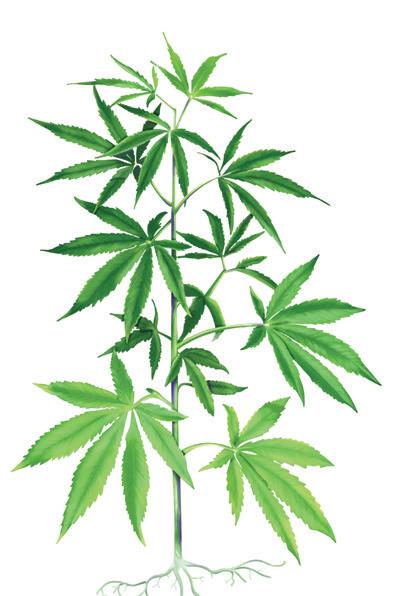
2 minute read
CULTIVATION
REGENERATION -
CLOSING LOOPS IN CANNABIS
Advertisement
BY RACHAEL CARLEVALE
The soil food web powers the life of plants; when we model this natural order, we can grow cannabis in a perpetual closed loop system. When we create the proper environment, we can grow the nutrients our plants need in our gardens, without having to purchase synthetic varieties of nutrients. These principles can be applied indoors in no-till living soil containers, and outdoors in living soil. They can also be applied from small home grows to large-scale operations, by way of regenerative farming practices.
The first step is to create and mimic the natural soil food web: the network of microorganisms serving to decompose organic matter, and fix nutrients and minerals into available forms for plants. The benefits of growing regenerative cannabis include carbon sequestration, less labor inputs, lower financial inputs, and a clean, healthy, beyond organic end product. Nature has created a perfect system that when bypassed, as conventional agriculture attempts to do, negates these benefits and creates unnecessary problems. Rather, by modeling nature’s designs and rhythms, we can develop regenerative cannabis farms that are healthy for the environment, the plant, and the end user.
THE SOIL FOOD WEB POWERS THE LIFE OF PLANTS
LET’S TAKE A LOOK AT HOW ONE MIGHT APPROACH EACH STAGE OF PLANT GROWTH TO CLOSE THE LOOP AND PERPETUATE THE CYCLE:
GERMINATION 5-10 days. The initial stage of growth begins in a living organic soil medium that is alive and teeming with nutrients, fungi, minerals, and microorganisms. It is ideal to start the plant in its final home to avoid stress, although many people transplant for space reasons. Here, we experience our first inputs that will remain cycle after cycle. The soil for germination will have either a seed or clone that will then be transferred to another container from their initial nursery.
SEEDLING 2-3 weeks, 18 hours light. Plants remain in the same soil. Water, mulch, and amendments may be applied. Seedlings may be transferred to a new container where they will remain for the rest of their life cycle.
VEGETATIVE 3-15 weeks, 18 hours light. Plants remain in the same soil. Water, mulch, amendments, and integrated pest management (IPM) may be applied. For indoor no-till container gardens, worms may be applied. Cover crops can be planted to provide natural nutrients for the plant. Crops are cut and clippings may be applied as mulch and also serve as organic matter for the soil food web.
FLOWERING 8-11 weeks, 12 hours light. Plants remain in the same soil. Water and amendments may be applied.
CULTIVATION Plants are harvested. Roots can remain in soil to serve as organic matter for microbiology or removed and composted for a quicker turnaround.
CURING Plants are dried and cured before being processed or consumed. Plants may also be harvested for fresh frozen purposes.

To continue the cycle, the next round of seedlings are planted in the same no-till container. If we can create an ecosystem focused on feeding the soil and turn away from the chemical dependent pH/ NPK* model of feeding the plant, we will establish the optimal outcomes for the earth, the people, and the equity of all.










